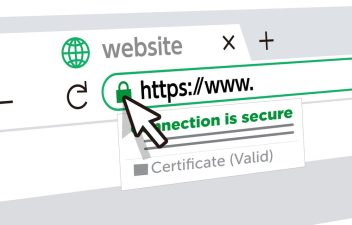All websites are at risk of security website attacks that stem from either human error in how they are coded or an elaborate attack from cybercriminals. If you currently own or manage a website, you need to know its vulnerabilities to ensure that it stays safe and secure from malicious intent.
 Photo by Sora Shimazaki from Pexels
Photo by Sora Shimazaki from Pexels
While it’s virtually impossible to fully understand what cybercriminals are plotting, knowing their usual tactics will help you be more prepared to avoid their attacks. To date, here are some of the most common types of website attacks and what you can do to prevent them from happening.
1. Fuzzing
Also referred to as fuzz testing, fuzzing is a type of website attack that deliberately crashes an application or website by overloading it with a large amount of fuzz or random data. Once the crash happens, the attacker will then use a dedicated tool to help identify the vulnerabilities of the website of interest. Should the attacker find a weak spot in the website’s security, they will then take advantage of it.
To keep any fuzzing attempts at bay, be sure that your security and other applications are up to date because, more often than not, patch updates come with security fixes that can withstand most fuzzing attempts.
2. Zero-day attack
This type of website attack is similar to fuzzing, except it doesn’t need to identify specific security weak spots. In general, there are two possible ways in how the zero-day attack is carried out – the attacker considers the security fixes that come with a patch update so that they can find a workaround before the update is deployed, or they can take any information about the update and target those who haven’t received the security patch yet.
Like the solution to avoid fuzzing attacks, it’s a good idea to run an update for your system as soon as its publisher releases a new version so that the zero-day attack cannot occur.
3. Man-in-the-middle attack
If your website is yet to be encrypted, take heed because you are very much susceptible to the man-in-the-middle attack. Websites that aren’t encrypted travel from the user to the server. Amid this process, the attack collects sensitive information for the attacker to exploit.
To keep this attack from happening to your website, an SSL or Secure Sockets Layer certificate will be effective in making sure that all information from both the website and the user is encrypted. The presence of SSL certificates can be determined if the website URL begins with HTTPS instead of just HTTP.
4. Distributed Denial of Service attack
The DDoS attack is unlike the previous ones on this list because it doesn’t just make it past various website attack security measures. Still, it will render the entire website offline temporarily or permanently as a result. These are done by overwhelming the website server with many requests using a botnet, making it unavailable for users who are trying to access it.
The solution that will help prevent a DDoS attack has multiple steps. First, you need to use a Content Delivery Network or CDN, a load balancer, and scalable resources to diminish the large number of requests sent by the attacker to the website server. After which, a web application firewall needs to be installed as a preventive measure if the DDoS is used to mask another website attack.
5. Injection attacks
Last but also the most popular type of website attack, the injection attack directly targets the website and the database of its server. To make this work, the perpetrator will insert a code that will give away sensitive information stored in the server’s database, allowing them to modify the data and damage the whole website.
The primary way to dispel the chances of getting an injection attack is to make sure that a parameterised statement is used when it is available. Apart from that, outsourcing your website’s protection by acquiring a third-party authentication workflow will also be of tremendous help.
Conclusion
While there are a lot of other cyberattack methods that IT professionals are primarily aware of, the standard procedure that is effective against all of them is to make sure that your website’s security features are given importance.
If you are looking for a provider who can make your website more secure and prevent website attacks, you might fancy taking a look at our web hosting plans.
Our service promises peak website performance and cost-efficiency because we believe that website security shouldn’t come at a steep price. Get in touch with us today and start building a more secure website!










